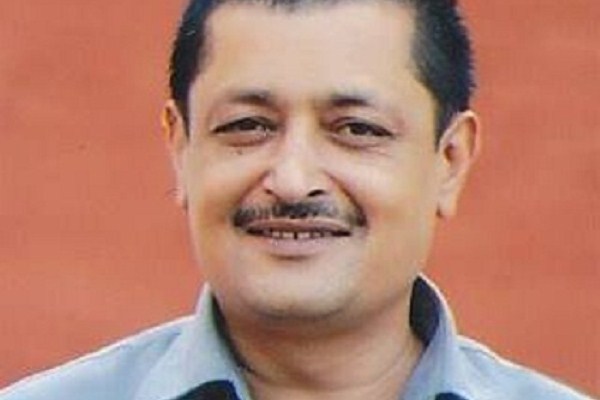विचार
Nepali Brahmanism
Dr. Krishna Bhattachan
I have always had friends, teachers, and students from the Brahmin community. I have even had some very close Brahmin friends and followers. My profession allows me to interact with people from all walks of life, including Brahmins. I have worked with Brahmins in my counseling service and even collaborated with them and others to raise public-voice. I agree with Brahimns, Indigenous people, Dalits, Madhesis, and Muslims as a group if they pursue the right cause. There are some Brahmins who agree with my ideas and some who vehemently oppose me. This is, of course, not exclusive to the Brahmins. In fact, the Brahmins who agree with me are those who believe in social justice, human rights, and true faith.
The principle of social justice and human rights are like the theory of Galileo, who proposed that the earth is round despite the popular opinion of his time. But Galileo’s assertion turned out to be right. Social justice and human rights are also unbreakable principles like Galileo’s assertion, even though the some Brahmins may deny them at the moment. While the Indigenous communities consider Brahmins as peaceful people with an academic culture, expecting them to realize the moral and ethical principle behind the call for social justice and human rights, the Brahmins instead admonish the Indigenous people as subordinate beings who do menial work.
Unfortunately, the Brahmins who hold these negative attitudes have ultimate power and position in the country. These Brahmins are greedy, deceitful, and treacherous. They are swindlers, cheats, and frauds. They believe in domination over women, dodging responsibilities, and avoiding real problems. These are the people who occupy policy and decision making level in Nepal. As a result, some blame the Brahmins of being “Tinphuke,” which means they simultaneously take on three distinct roles of socially respectable positions as a Hindu priest by blowing a conch-shell and a cook by blowing on bamboo-pipes, and at the same time of an instigator of quarrels and animosity by backbiting or badmouthing people. In fact, they seem too adaptable: when there is no cow to offer as a religious gift, the Brahmin makes do with just a piece of gold in its place. If there is no gold, he will take money instead. And when money is unavailable, he will take Kush grass .1
On the surface, adaptability may sound like a positive attribute. But actually, the Brahmin is a shape shifter. Whatever he does, he only does it for his own benefit. For instance, for a long time, his main tendency was to seize the land owned by indigenous people. Leonel Caplan writes in his book Land and Social Change in Nepal that the Limbu people recite the following verse to mark the mistrust between Brahmins and Limbu:
Tip of the sugarcane, root of the radish
Keeping the servant is the ruin of the house
Left in the barn, he drinks the cream
Left in the home, he takes your spouse
The above verse clearly reveals the mistrust the Limbus, an indigenous tribe of Nepal, feel toward the Brahmins. The tip of the sugarcane references the Brahmins and the roots of the radish refer to the Limbus. Wherever you plant the tip of the sugarcane, it grows swiftly. Even when we set fire to its bush, the next year it spreads more rapidly. Using the tip of sugarcane as analogous to Brahmins, the verse indicates that the Brahmins propagate as rapidly as does sugarcane, that is they raise to the upper echelons of the social class just as the tip of the sugarcane erects itself following the light of the sun. All the while indigenous people like the Limbus remain stable growing deep roots just as the radish. Consequently, the rooted Limbus and Rautes cannot be found everywhere. Incidentally, the verse also reveals the reality of the Brahmins’ penchant for hegemony and domination, for if they are given any room within the indigenous community, then they spread exponentially subsuming and overthrowing the local culture. To sum it up, Caplan describes it best when he writes that if you lease your land to Brahmins on rent, they could in due time transform you into their slaves (59).
Thus, indigenous peoples, like the Limbus who have always raised their voice and those like the Tharus who have so far not been involved in any movements, should work hand in hand to combat the greed and oppressive nature of the Brahmins. There are many local indigenous stories that narrate how the Brahmins have seized the land of the indigenous communities. And all of these stories expose the manipulative ways through which the Brahmins have always seduced and cheated indigenous people.
The Limbus tell a story of a Brahmin family who once came to their village. The head of the Brahmin family asked the Limbu elder of the village for a piece of land that covered a single pumpkin plant. The Limbu elder generously provided the land with a single pumpkin plant because it was just a small patch of land. As the pumpkin began to grow, the Brahmin used sticks to support the vines of the pumpkin, which grew to cover a much larger patch than the original piece of land gifted to him. It so happened that the Brahmin gave some gifts to the Limbu elder and asked the Limbu elder to keep watch over his pumpkin. It was then that the Limbu elder noticed that the pumpkin now covered a much larger area of land than his original gift. However, the Limbu elder did not say anything and allowed the Brahmin to occupy the land because he had given the Brahmin his word.
Some Tamangs also tell a similar story: a Brahmin couple once left an egg in their home, telling them that they would come back later to collect it. In the meanwhile, the egg hatched into a chicken and with time it turned into a healthy hen. Since the Brahmins were nowhere to be seen, the Tamang sold the hen and invested the money on goats. The goats later gave way to buffaloes. After many years, the Brahmin couple returned asking that their property be returned. As they came to learn about their egg hatching into a chicken and how that chicken grew into a hen and which led to goats and buffaloes, they sized them all. The Tamang was simply astonished at what had become of him.
Limbus and Tamangs are not alone in telling such stories. Dhimal, Gangain, Koche, Meche and others have similar stories to tell. During the Congress Movement in the Eastern Hilly Region lead by Naradmuni Thulung and Ramprasad Rai in 1951, Brahmins and Chhetris escaped and dwelt in the jungle of Jhapa and Morang after being attacked. The local indigenous people went to meet their new neighbors, a Brahmn couple. The couple served them yoghurt for free. The indigenous people found the curd strange and tasty as they were in the habit of taking only local wines. When they asked for a second helping, the Brahmin couple asked for money in exchange for the yoghurt. Since the indigenous people did not any money, they agreed to sign on a legal paper. The Brahmin couple asked the indigenous people if they could add five zeros after the one, even though there was a single zero initially. The indigenous people lost all their property as a result of that single sheet of paper.
The story of Santhal in Jhapa has a similar tone. During the time when the story takes place, the Santhals had plenty of land. The Brahmins had a strong desire to get that land. At first, they developed a good relationship with the Santhals. Then they hid a gun among the Santhals. Next day, the Brahmins threatened the Santhals by suggesting that the government would punished them since they had hid an unauthorized weapon in their midst. Afraid of the government, the Santhals relocated to some other safer place, leaving their original land to be occupied by the Brahmins.
Sabina Rajbanshi’s documentary, which is based on a true story, also narrates the tale of a Brahmin’s cunning in taking over a Rajbanshi’s property. As per the incident, a particular Rajbanshi had a lot of land and a servant to take care of him and his property. When the landlord died, the Brahmin exhumed his master’s body from the grave and using the dead man’s fingerprints transferred his master’s property to his name. Now the son of that master has become the servant of that Brahmin.
A story from the Tharu community in Dhangadi starts like this. At first, the Brahmin develops friendship with a Tharu. He complains to the Tharu that he doesn’t have any land even though he is the Tharu’s friend. He, therefore, asks the Tharu to give him a small plot. Friendly and honest Tharu allocates a piece of land for his friend. Later, the Brahmin sizes all the land belonging to the Tharu and then the Tharu becomes landless.
In fact, land grabbing by Brahmins happens even today. A Brahmin intellectual from Jhapa has made it public in great detail that Brahmins such as Oli, Sitaula, Prasain, and others have seized the land of indigenous people using different tricks. He has revealed the reality of the Brahmins. I searched for the book but could not find it because the Brahmins destroy all books that malign them.
The issue raised by Brahmins about the nature of Brahmins in different contexts can actually help us in understanding their real nature.
In 1994, a group of Brahmin scholars, Dr. Khagendranath Sharma et al., mentioned a dozen such examples in the report “A Modest Study of the Current Socio-economic Situation of the Lower Caste and Tribal Communities in Nepal” (48). In the book, they write of a Satar landlord of Dharampur, who had so much land that he had to use 18 yokes of oxen to plough the field. But the high caste people from the hilly region gradually seized the landlord’s land. Sometimes they used legal means, while at other times they used illegally means. After the death of the landlord and his son, the high caste people took the remaining 20 bigaha from the landlord’s grandson. As there was no bank account created as per agreement, the high caste people did not offer any payment. The grandson of the landlord submitted a writ to the district court in Jhapa, but he lost the case. He submitted an appeal to the court of appellate in Ilam, but was threatened that he would face serious consequences. Fearing retaliation, he did not show up in the court. Nowadays he is landless and has even lost his Nepalese citizenship.
Incidentally, in a session “Culture As a Vector And a Sector,” organized by HELVETAS, Nepal, on 7th June 1998, out of all the experts participating in the discussion, nineteen from the Brahmin community accepted that they are greedy and sinful to others. In similar vein, writing about Dr. Taranath Sharma introducing himself at “Patal Prabas,” Professor John T. Hitchcock emphatically writes that “[Dr. Taranath Sharma] startled like a king cobra.” Then he continued, “Sharma is Brahmin, isn’t he? Brahmins exploit, suppress, and dominate the indigenous people as much as they can, don’t they?” (15).
This saying resembles Chanakya’s diplomatic statement in the third chapter, fourth verse: “Durjansya cha sarpasya varam sarpo n durjan: sarpo dashanti kalen durjastu pade pade.” In other words, “A snake is good between a wicked person and a snake not that person. Because a snake bites when there is ultimate death but the wicked person hurts in each and every steps.
Likewise the seventh chapter, 8th verse also reveals an interesting truth that applies to Brahmins: ‘Takshakasya visham dante makshikayasta mastake. Brishchiksya visham puchchhe sarbange durjane bisham’. Which means that a snake has got poison in its teeth, the housefly in the head, and a scorpion in its tail; however, a wicked person’s whole body is full of poison.
A literary figure Harshnath Bhattarai claims, in the article “Against Illiterate Brahmanism” published in his quarterly magazine Unnayan, that “As we go further, Brahmins are the descendants of Brahma, the Hindu god, but they are labeled with disrespectful terms such as Bahun, Katha, Kattike, Katte and so on” (7). Bhattarai further writes, “In the context of Nepal, from Parshuram to Prime Minister Rangnath Poudel or from Parshuram to Prime Minister B.P. or Girija, Brahmanism has always existed in the country. Caste system is the foundation of Brahmanism.” (7).
As Khagendra Sangraula has mentioned in his “Mother and Messengers of Death,” the main purpose of reciting Garudh Puran when there is a death of any family members or not permitting the intake of salt and other good food at such a time is to make them physically weak and mentally terrified. That certainly helps Brahmins to collect as much gifts or money as they can. Sangraula adds, “I have observed that inhuman Brahmins and display of inhuman behaviors in the name of religion are more dangerous than imaginary messengers of death. While reciting hymns of praise and taking out his clothes, the Brahmin was taking a bath, and he himself was a slave of superstitious and illusion; however, he walks just preaching about salvation. Now I am really sorry for his inhuman existence, pitiable! Wanton Puret Baje” (136).
Arun Baral has similarly written about the nature of Brahmin in his book Brahmanism: “Brahmins cannot remain struggling in a single place for a long time, for they are unstable, escapist and wanderers. Brahmins escaped from Kasmir, even from the Muslim attack in India. And they came to western part of Nepal, then entered Limbuban and Khumbuban in the eastern part of Nepal. They went to Sikkim and Bhutan, even to Muglan in India. They were the first escapists from Bhutan, as they couldn’t endure government suppression. Therefore, they have the story of escaping in difficult situation” (31).
Baral further adds, “As escaping and wandering are the main features of Brahmins, they don’t have their own nation. If there is federal system of governance in Nepal, they have an obligation to dwell where majority of the people would be besides their caste. Therefore, Brahmins are against federalism. Talking about the main features of Brahmins, they neither have land nor their own culture. They are still following the culture and religion of Bharata, India. They take Varanasi culture as their nationalism. It’s up to all of being escapists. Escaping is their main characteristic. Wandering for satisfaction has become their livelihood.
Source:- Nayan Patrika

 एक विद्वानले भनेका छन्–“एक वर्षका लागि हो भने धान रोप । एक दशकको लागि हो भने रुख रोप । एक शताब्दीको लागि हो भने जनतालाई शिक्षित गर ।” नेपाल एउटा विविधताले भरिएको देश हो जहाँ विभिन्न जातजाति भाषाभाषी, धर्म संस्कृति छ । जसको आफ्नै मौलिकपन छ ।
एक विद्वानले भनेका छन्–“एक वर्षका लागि हो भने धान रोप । एक दशकको लागि हो भने रुख रोप । एक शताब्दीको लागि हो भने जनतालाई शिक्षित गर ।” नेपाल एउटा विविधताले भरिएको देश हो जहाँ विभिन्न जातजाति भाषाभाषी, धर्म संस्कृति छ । जसको आफ्नै मौलिकपन छ ।
 भनिन्छ पूर्वबाट उदाउँने सूर्य अन्त्यमा गएर क्षितिजमा अस्ताँंछ । क्षितिजलाई खोज्दा खोज्दै मानिसको भौतिक शरीर एक दिन समाप्त हुन्छ । जसरी सूर्य पूर्वबाट उदाएर पश्चिम हुँदै क्षितिजमा हराउँछ । किनकि यो प्रकृतिको नियम हो । मानिस जन्मिएपछि एक दिन मृत्यु निश्चित छ ।
भनिन्छ पूर्वबाट उदाउँने सूर्य अन्त्यमा गएर क्षितिजमा अस्ताँंछ । क्षितिजलाई खोज्दा खोज्दै मानिसको भौतिक शरीर एक दिन समाप्त हुन्छ । जसरी सूर्य पूर्वबाट उदाएर पश्चिम हुँदै क्षितिजमा हराउँछ । किनकि यो प्रकृतिको नियम हो । मानिस जन्मिएपछि एक दिन मृत्यु निश्चित छ ।
 भाग्य र समय यति बलवाल छ जहाँ केवल भगवानको कृपा र समयको साथ हुन्छ । भगवानको कृपा र आशिर्वादविना मानिसले यो संसारको कल्पना गर्न गाह्रो छ । किनकि प्रत्येक जिवित प्राणीमा भगवानको आत्मारुपी शक्ति हुन्छ । जुन शक्तिको कारण भौतिक वस्तुहरुको विकास भइरहेको छ ।
भाग्य र समय यति बलवाल छ जहाँ केवल भगवानको कृपा र समयको साथ हुन्छ । भगवानको कृपा र आशिर्वादविना मानिसले यो संसारको कल्पना गर्न गाह्रो छ । किनकि प्रत्येक जिवित प्राणीमा भगवानको आत्मारुपी शक्ति हुन्छ । जुन शक्तिको कारण भौतिक वस्तुहरुको विकास भइरहेको छ ।
 ‘मित्रता– दिवस’मा उच्चतम परिणाम हात पारे– रेणु र पार्वतीले । महिला– मेयर उपमेयरको महत्व पछि पत्तो होला । तर, सशस्त्र युद्धको भार बिसाउँदा भन्दा ठूलो खुशी मिलेको हुनुपर्छ– प्रचण्ड परिवारलाई । चितवनका ‘छविलाल’को मात्र होइन सानेपा गठबन्धनको पनि ‘छवि’ उजेलियो ।
‘मित्रता– दिवस’मा उच्चतम परिणाम हात पारे– रेणु र पार्वतीले । महिला– मेयर उपमेयरको महत्व पछि पत्तो होला । तर, सशस्त्र युद्धको भार बिसाउँदा भन्दा ठूलो खुशी मिलेको हुनुपर्छ– प्रचण्ड परिवारलाई । चितवनका ‘छविलाल’को मात्र होइन सानेपा गठबन्धनको पनि ‘छवि’ उजेलियो ।
Comments